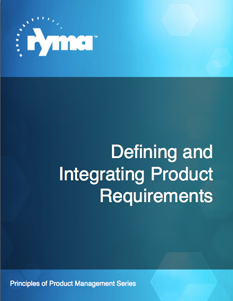
In the world of product management, it is important to recognize the difference between a product feature and a product requirement. A feature is part of the product that would be advertised to the market and leveraged by end users. Requirements are the set of items that must be put together by engineering and development teams in order for a feature to exist.
In this guidebook, we look at how to effectively define and integrate requirements in a way that enables you to release high-quality, innovative products; as well as how product requirements software can help organize and manage new requirements and customer needs.
Written by experienced product management consultants, the ebook includes information related to:
"By establishing properly defined requirements that identify market expectations, market requests, and additional items that delight users, product managers can effectively increase customer satisfaction by aligning their end product with the customer’s solution vision, and reduce change orders by increasing the predictability of a product development cycle.
From a financial standpoint, properly defined requirements also help reduce product costs and investment risks while increasing product value, as the documented information enables you to avoid unnecessary, lost, and/or dropped market problems while increasing user adoption rates.
...
Performance requirements are sometimes referred to as the “spoken” requirements. They're a direct translation of the market-facing goal of the product feature to an internal statement of need to development and engineering teams. Of the needs that customers verbalize, most will fall into the category of performance requirements.
Therefore, it’s a good idea to add more performance requirements, as they will improve customer satisfaction. Conversely, an absent or weak set of performance requirements always reduces customer satisfaction. The performance requirement is the explicit definition of what the market is currently asking for.
The price for which a customer is willing to pay for a product is closely tied to performance requirements. For example, customers would be willing to pay more for a car that provides them with better fuel economy."